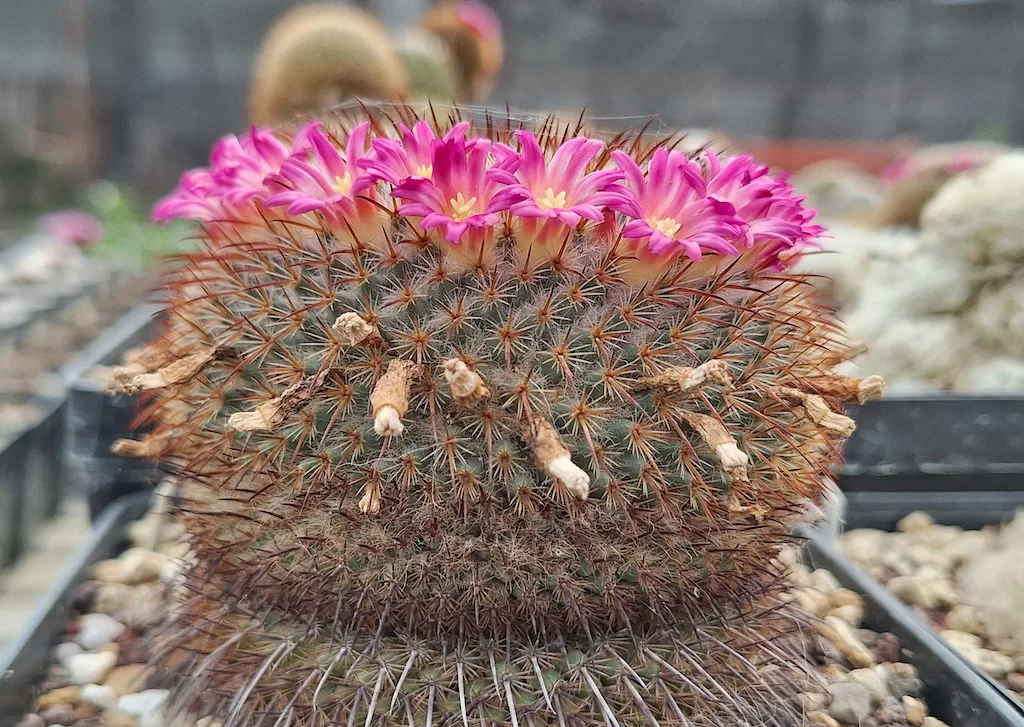Spring, the so-called beautiful season, has now begun: what to do with cacti and succulents? Should you take plants kept indoors outside during the winter? Remove covers or layers of non-woven fabric? Resume watering? Fertilize plants?
Spring is the season of recovery for all plants, and succulents are no exception. Many species are already in full bloom, such as Stenocactus, Strombocactus, many Turbinicarpus and several Mammillaria. Be careful, however, there is a difference between flowering and vegetative growth: a plant can flower even if it has not fully resumed vegetating. Simply, this is its flowering period and the plant respects it even if it is still coming out of the winter “dormancy” state. As regards temperatures, obviously there is a big difference based on the area in which it is grown, so in some regions of the South the night-time minimums can already be above 10 degrees, while in the North we still have relatively low values, around 2 or 3 degrees. This factor is fundamental to understanding whether we can move our plants outside or not. Equally important is the time to resume watering. Can we start watering cacti and succulents these days or is it better to wait a little longer? Finally: with the start of the summer, is it necessary to carry out some treatments with plant protection products or can this practice be avoided?
Let’s see everything in detail in the following article, so as to move correctly and avoid problems or rot damaging the plants. (…)
Succulent plants and springtime: introduction
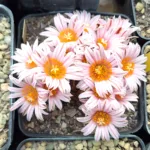
After a winter spent in vegetative stasis, almost all cacti and succulents start growing again by mid-March. This can be seen above all by the production of new thorns and the resumption of growth of the stem. Flowers, in this context, are irrelevant: plants that flower in spring do so regardless of the vegetative growth. There are several species of Mammillaria, just to give an example, that flower in February, as well as some Ancistrocactus. This therefore does not mean that the plant has started to vegetate again and that we can resume watering. The vegetative growth, essentially, consists in the actual “awakening” of the plant, which begins to grow again, activate the root system and produce new thorns. So let’s not trust the flowers to start watering the cacti again: the risk of them rotting, if the roots are not yet active and the temperatures are still low, is very high!
Check the succulent plants carefully to check their health
A first good practice to implement in spring is certainly to check the plants carefully to check that there are no rot or parasites present. The risk of rot starting immediately after winter is quite high, because mold and bacteria become active as temperatures rise. It is therefore important to examine all the plants to ensure that there are no suspicious stains on the stem. In case of spots or full-blown rot, it is essential to isolate the specimen and treat it (if it is not too late) with a broad-spectrum fungicide. Copper oxychloride can be useful but is not always curative. In the case of fusarium, for example, there is very little to do other than remove the rotten part, brush the wound with powdered copper oxychloride and sulfur and keep the specimen in the air as much as possible and away from other plants. Except for serious rot, a few passes with Neem oil are useful: it is a natural product that offers good protection to plants.
Spots and rot on cacti: what to do.
Temperatures: moving cacti and succulent plants outside?
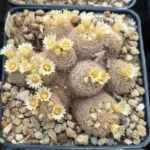
Temperatures are a fundamental element to consider during this period. Minimums and maximums can vary considerably depending on the geographical area in which it is grown and the weather is not yet completely settled. Given this, if the night-time minimum temperatures do not fall below 3-4 celsius degrees, cacti and succulents can be brought outside, with the exception of epiphytes and genera such as Melocactus and Discocactus, which require minimum temperatures not lower than 10-12 degrees . Those who have left their plants to overwinter outdoors can simply remove the layers of non-woven fabric, or open greenhouses and greenhouses as much as possible. At this stage, temperature changes between day and night can only be good for the plants and the important thing is that cacti and succulents are sheltered from the rain. For the rest, air is essential to avoid mold or fungi, therefore the plants should be placed outside, taking care not to move them into full sun if they have been kept in environments with little light during the winter: in fact it is It is necessary for cacti and succulents to gradually get used to intense light.
The spring and watering: when is the right time?
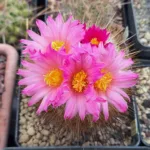
Seeing the plants shriveled, deflated or simply witnessing sunny days, the temptation to water is strong. These days, however, it is good to restrain yourself and wait a little longer before watering the cacti and succulents. The roots may not yet be active and wetting the soil, especially if the night-time lows are still relatively low, risks triggering rot. A little patience, therefore, and let’s wait a few more days before watering. From the end of March and the beginning of April it will be possible to give a first pass of water. A warning: the first two waterings – spaced at least 20 days apart – must be light. An excess of water, if the plant is already in full vegetation, can cause the stem to split because cacti are very greedy and quickly absorb all the water they have available in a short time.
Here you will find the section with articles dedicated to watering succulents.
Fertilize succulents or wait a few more weeks?
Even for fertilizations it is best to wait. Fertilizing now involves wetting the soil, exposing the plant to risk of rot. Furthermore, it is good practice to add the fertilizer to the water only after having carried out a couple of waterings with water only. In this way the plants are completely reactivated and when we add the fertilizer they will be ready to absorb it and use it according to their needs. Generally speaking, it can be said that it is advisable to wait until at least mid-April for fertilization. Pay attention to the type of fertilizer: specific fertilizers with a low nitrogen content and a high phosphorus and potassium content must be used with succulents.
Here you will find an article entirely dedicated to fertilization.
The spring and treatments: are they really necessary?
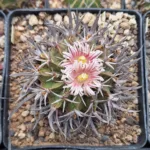
Finally, treatments with pesticides in spring. Personally, I stopped using chemical products for years, with the exception of copper oxychloride, which should be given mostly in autumn and, sporadically, during winter. In the summer, if the plants are still in stasis, a spray of copper oxychloride distributed by nebulization can be useful for preventive purposes. If the plants are healthy, a preventive treatment (at a distance from the treatment with copper oxychloride) with Neem oil, a natural product capable of protecting the plants from possible parasites, will be sufficient. Treatments should be carried out in the early hours of the morning or in the evening, never when the plants are exposed to the sun.
SUBSCRIBE TO THE SITE – If you liked this article, subscribe to the site to have unlimited access to all the contents for one year or three months depending on the formula you choose. Here you will find terms and conditions.
SUBSCRIBE TO THE NEWSLETTER – If you want to receive the free newsletter every time new content is published, fill in the fields at this link!
Correlated articles
- How to grow cacti: the handbook
- The section dedicated to soils
- Most frequent questions and doubts
- All cultivation cards in pdf
© The texts, videos, photos and graphic elaborations of the site “Il fiore tra le spine” are original material and are covered by copyright. It’s forbidden to reproduce them in any way.


